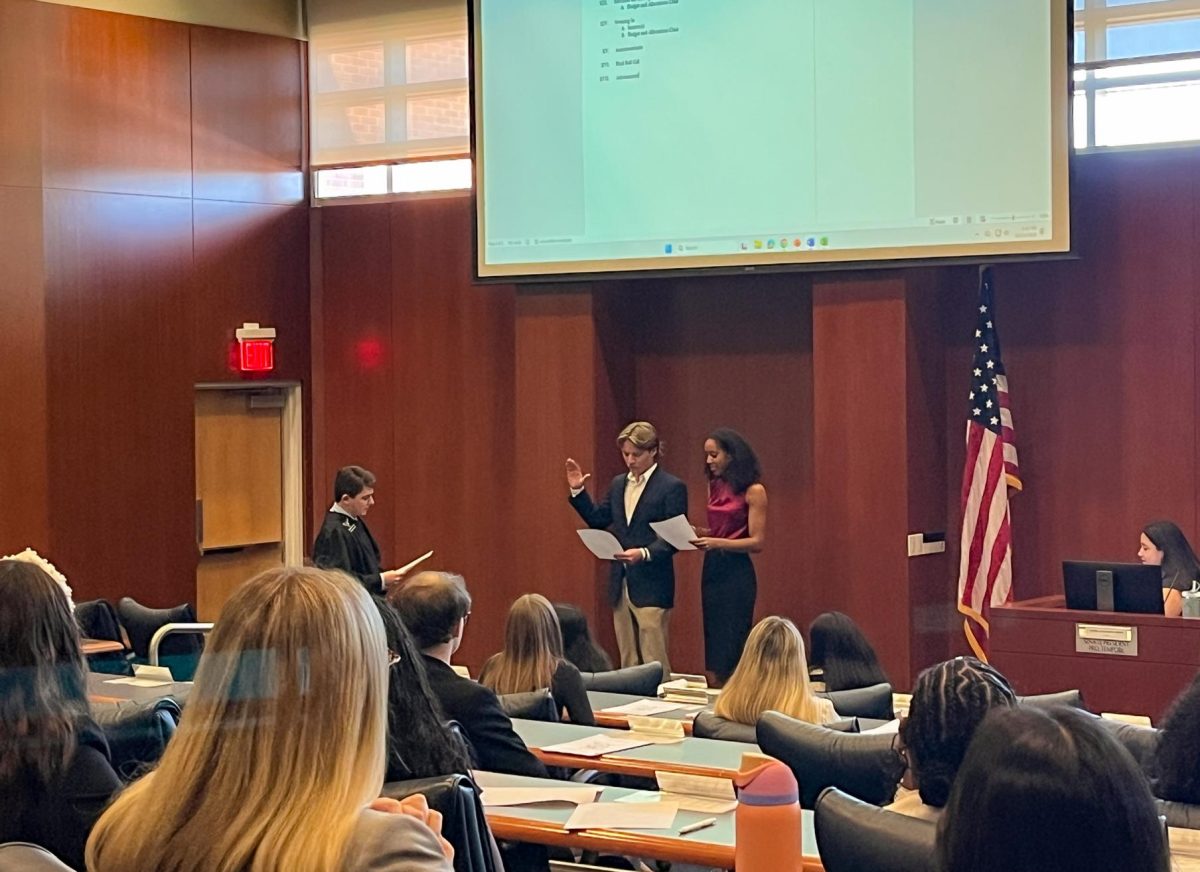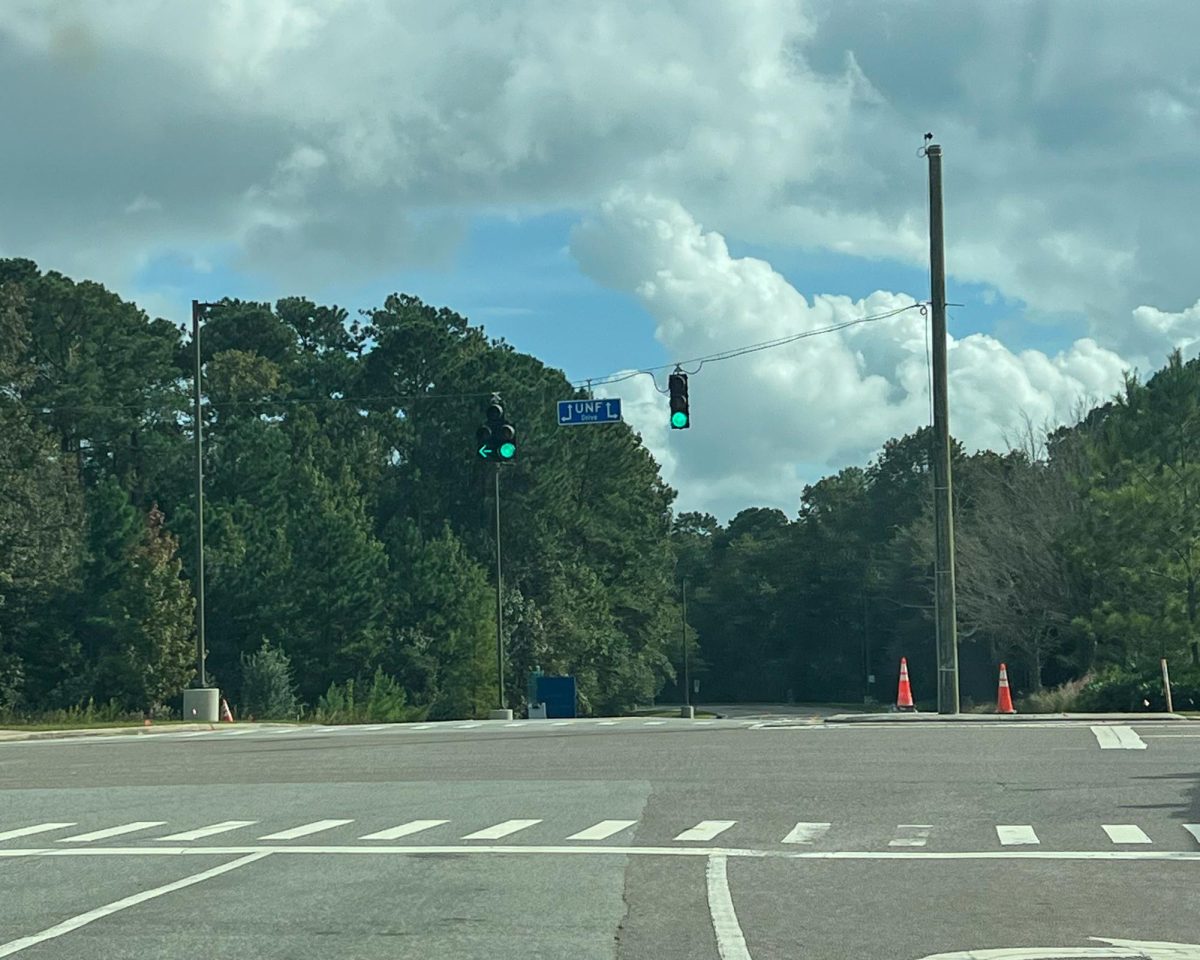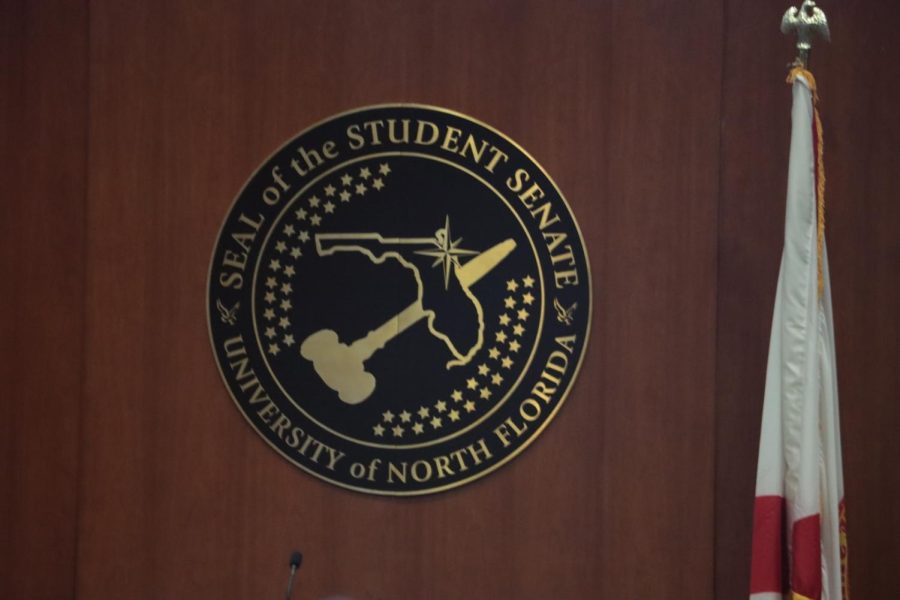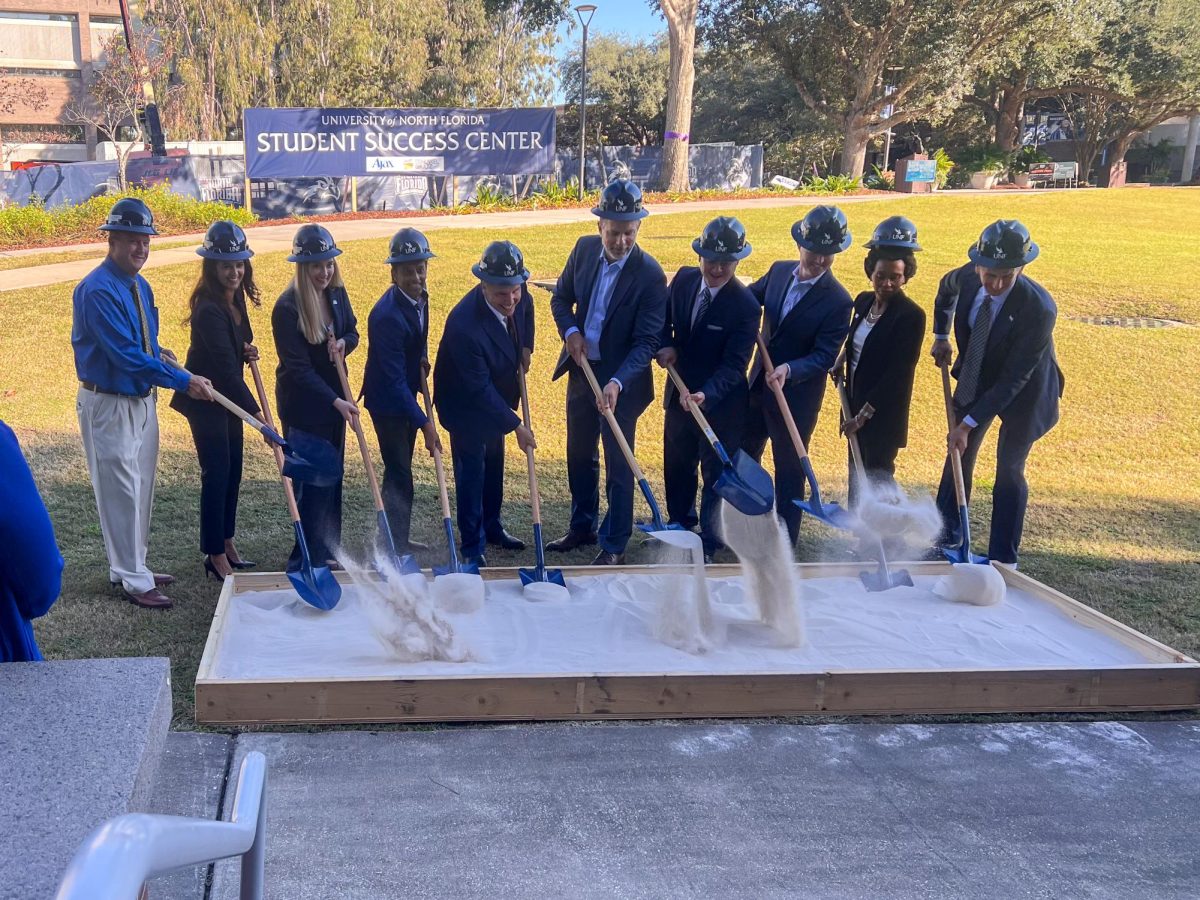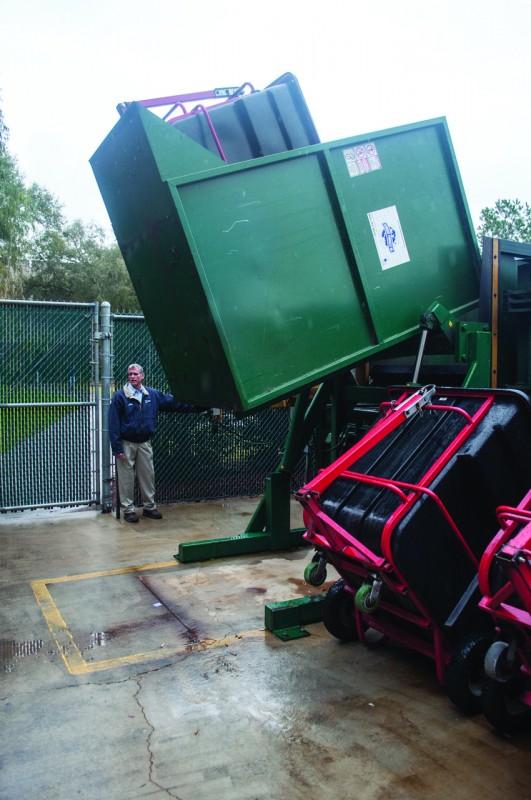
UNF is literally saving tons in natural resources and money thanks to its technologically streamlined recycling process, according to Robert McCracken, manager of the Physical Facilities department.
McCracken also oversees the Recycle and Refuse department and said the recent changes have centralized the operation, allowing fewer people to do more work.
“Our primary focus is to make [recycling] as efficient as possible and to reduce the amount of recyclables going into the waste stream.”
McCracken said UNF has been contracted with Southland Waste, who handles all waste on campus, for several years. He said Republic Services bought the company and renewed their contract with UNF last July.
Since then, he said, there has been an improvement in technology which saves his department a lot of time and labor.
This includes tilt-trucks, large black receptacles that can be linked together like a train and caravanned to the different compactors around campus.
The Tipper that hides behind the library is one of nine, giant, stationary dump trucks that empties tilt-trucks. Staff can push a tilt-truck onto the platform and, with the push of a button, it is lifted and emptied in seconds.
“We no longer have to sort anything,” McCracken said. “All recyclables go into the same compactor.”
Chuck Hubbuch, Assistant Director of UNF Physical Facilities, said Republic Waste has a new, multi-use recycling facility located on the Northside.
“They have a remarkable conveyor system,” said Hubbuch.
The system, called single-stream recycling, is a system of conveyors equipped with myriad methods for separating components; from magnets that pull out metal particles to jets that blow away paper and lighter debris.
Hubbuch said the facility accepts a greater variety of recycled material including cardboard, metal and Styrofoam.
He said even though the bins around campus are labeled, the collective recyclables from any bin on campus will end up at the Republic facility.
Although the materials ends up on the same conveyor, McCracken said it is important to have different bins for different types of items, to help reduce contamination. He said it is also important for students not to mix waste and recyclables.
If there too much waste mixed in with the recycling, Hubbuch said the entire load must be wasted.
“Up front, recycling costs a little money,” McCracken said. “But where we see the savings is in our waste reduction.”
The goal for UNF, McCracken said, is 75% waste conversion. UNF is currently closer to 30%, which he said is a 5% increase from last year.
Hubbuch said, as UNF grows, the finances change – and not always for better. He said the Physical Facilities department is doing more work with the same number of people as a result.
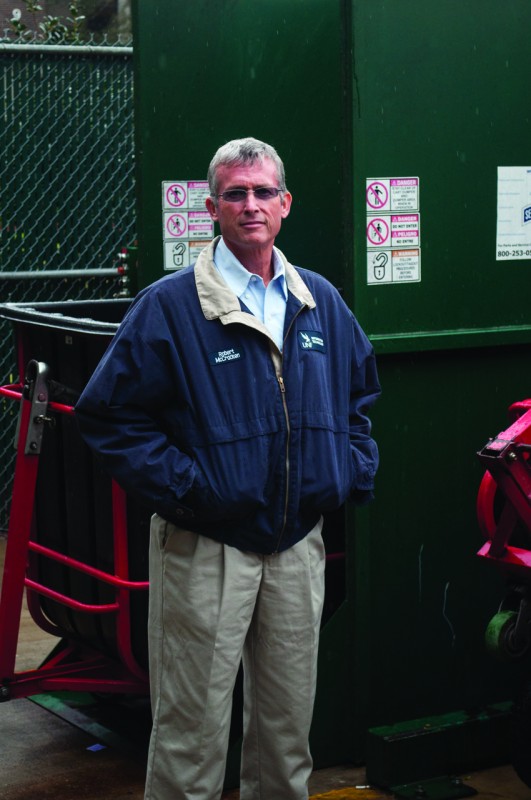
He said, however, the work has become much easier with the new technology.
The top-load dumpsters on campus have been replaced with UNF’s own compactors. McCracken said this is where UNF has seen the biggest savings.
He said, when using the noisy top-load dumpsters, UNF is charged for every pickup – regardless of how full the containers are.
“In some cases, you’re paying for more than you need to,” McCracken said. “Now, we have pressure gauges built into hydraulic systems that let us know when the containers are full.”
McCracken said staff monitors the new trailers daily, and hauls them to the two largest compactors near Lot 14, where they are filled and tipped when needed.
He said the new rate for what the contractor charges to pull containers reduces the amount of service calls, thus saving money.
“We only pay for weighted material going to the landfill and are reimbursed a specific amount per ton of recycled material,” McCracken said.
He said it’s great to see how much weight we are diverting from the landfill.
Hubbuch said, in previous years, many of the Physical Facility tasks were split between crews.
Now, many of the tasks have been consolidated, so the Recycling & Refuse department can handle all the bins on campus.
Hubbuch said there are more than 200 bins located throughout UNF’s buildings, and at least 200 more outside.
Custodians bring the trash out of the buildings and place it in tilt-trucks. At 6 a.m., the tilt-trucks are hooked together and taken to one of nine compactors on campus. The Tipper empties the tilt-trucks into the compactor.
McCracken said the compactors are self-contained, so there’s no leaking. They’re also covered, so it’s easier to keep trash in and animals out.
“It really solved a lot of our issues,” McCracken said.
Tyler Toomey, President of the Residence Hall Association, said the Environmental Center and the Housing Department have all worked with Physical Facilities to raise awareness and place decals on all the campus bins.
Toomey also helped start a pilot program which provides Osprey Landing residents with recycling boxes.
McCracken said RecycleMania and Garbage on the Green were successful, promotional activities and hopes departments will continue to advocate a greener campus.




